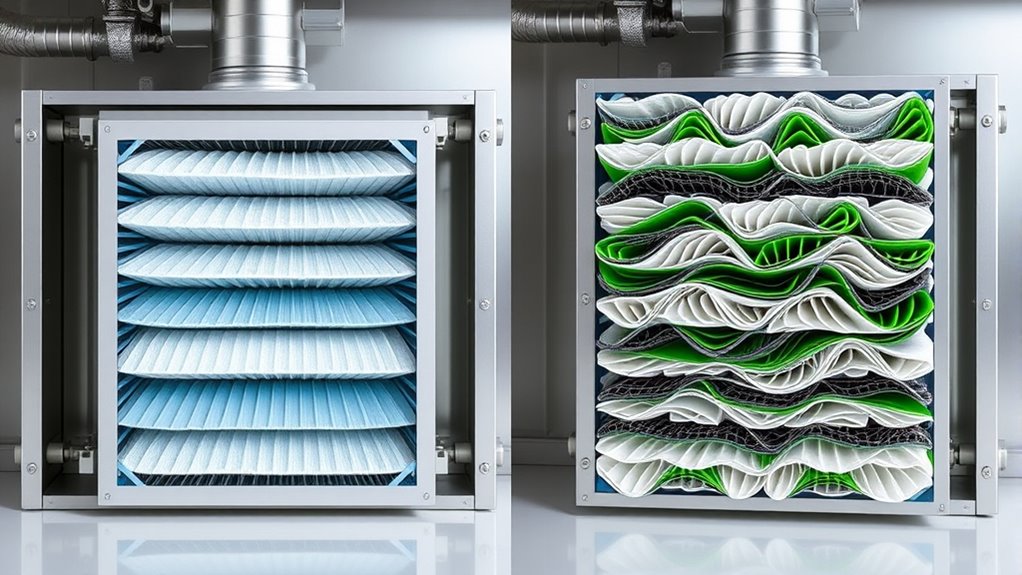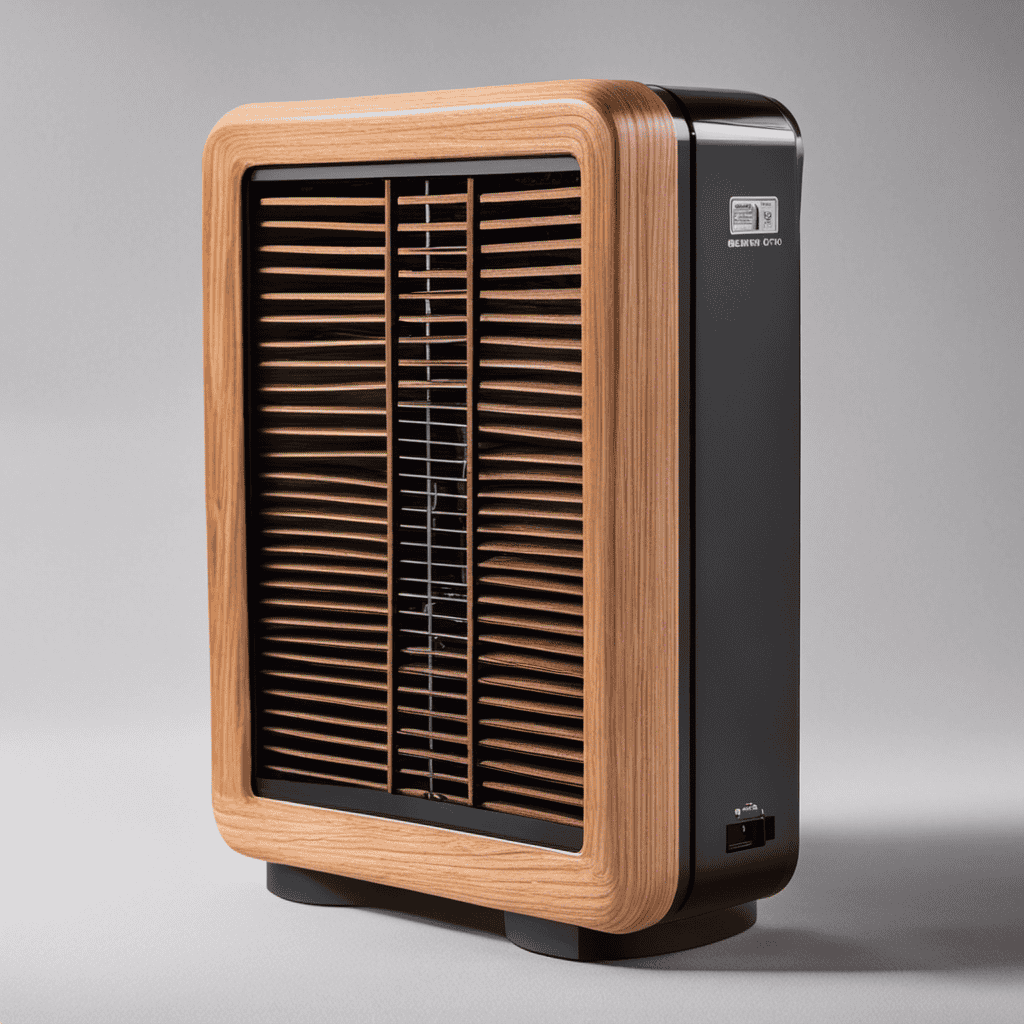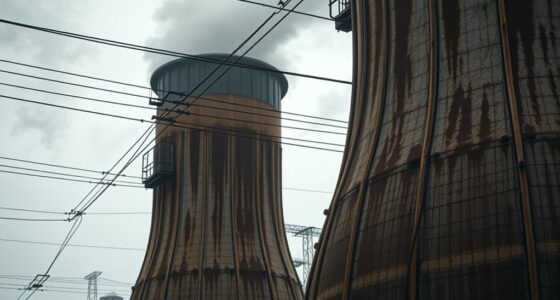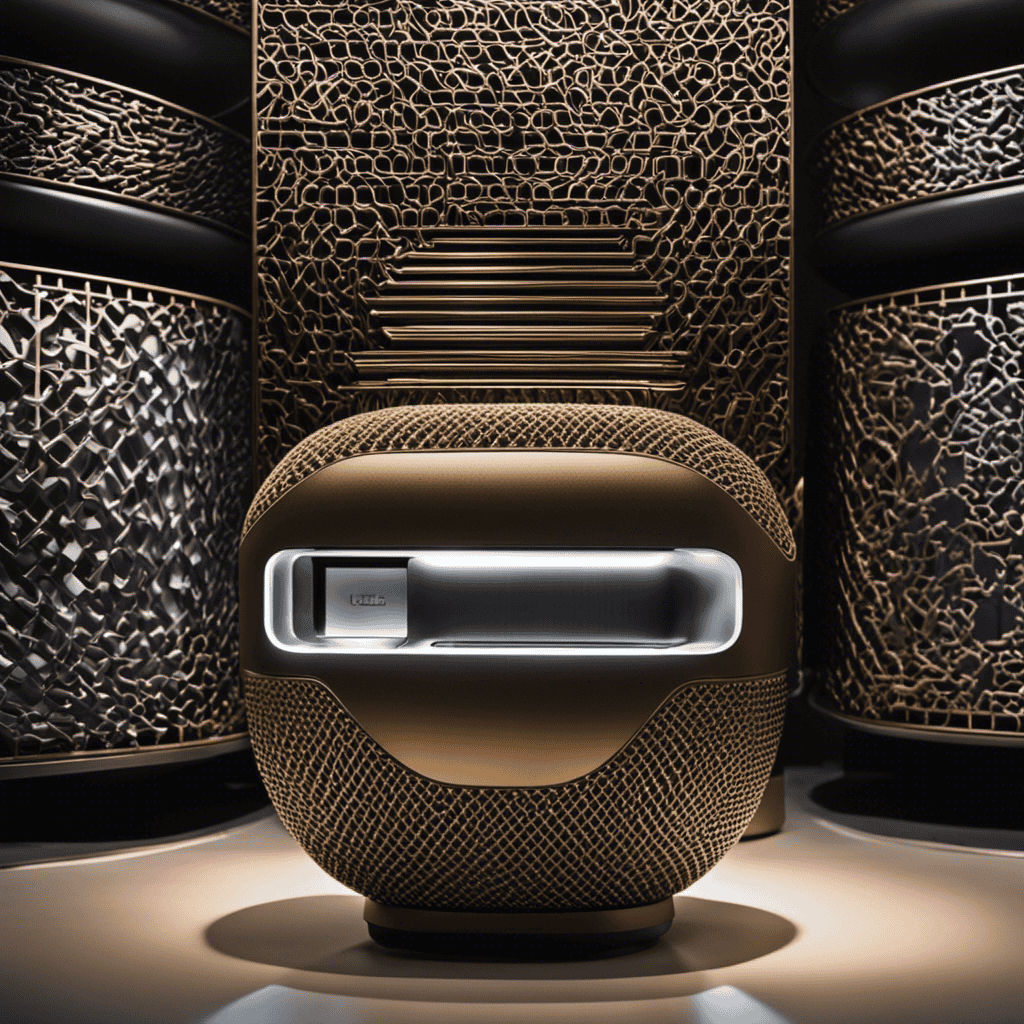A 5-stage system offers better air purification than a 3-stage setup, thanks to more media layers that trap a wider range of pollutants and allergens. While it can provide cleaner, healthier indoor air, it also comes with higher upfront costs and ongoing maintenance. If you want maximum filtration, a 5-stage system is worth it. To find out how each setup compares and which fits your needs, keep exploring the details below.
Key Takeaways
- 5-stage systems offer superior air purification due to additional media layers trapping more pollutants and allergens.
- They tend to be more expensive upfront and require more frequent maintenance and media replacements.
- 3-stage systems are simpler, less costly, and easier to maintain, making them suitable for budget-conscious users.
- For high pollution or allergy-sensitive environments, 5-stage systems provide cleaner, healthier indoor air.
- The choice depends on balancing desired air quality against long-term costs and maintenance complexity.

Are you trying to decide between a 3-stage and a 5-stage HVAC system? If so, you’re likely weighing the benefits of better air quality against costs and complexity. A key advantage of 5-stage systems is their enhanced air purification capabilities. With more media, these systems can trap a wider range of pollutants, allergens, and airborne particles, resulting in fresher, healthier indoor air. If you or your family suffer from allergies or asthma, a 5-stage setup might be worth the investment because it provides cleaner air and reduces irritants more effectively than a 3-stage system. However, it’s important to take into account that these additional media layers can also lead to increased maintenance costs. More media means more frequent replacements or filter changes, and this ongoing upkeep can add to your overall expenses.
A 5-stage HVAC system offers superior air purification but may require higher maintenance and costs.
When comparing the two, keep in mind that 3-stage systems are simpler and generally less expensive upfront. They still provide good air purification, often through combined filters or media that target common pollutants. But they might not capture as many fine particles or volatile organic compounds as a 5-stage system can. If your primary concern is improving air quality, especially in environments with higher pollution or allergens, a 5-stage system could be a better choice. On the other hand, if you’re budget-conscious and prefer a lower-maintenance option, a 3-stage setup might suit your needs without sacrificing too much in air quality. Additionally, understanding air filtration layers can help you make a more informed decision.
Another factor to take into account is the long-term maintenance costs. A 5-stage system’s additional media and filters require more frequent inspections, replacements, and cleaning, which can increase your annual upkeep expenses. Conversely, a 3-stage system usually involves fewer components that need servicing, making it more straightforward and affordable to maintain over time. Remember, though, that skipping regular maintenance can reduce the effectiveness of your system’s air purification and may lead to higher energy consumption or system failures down the line.
Ultimately, your choice depends on your priorities. If you prioritize the highest possible air quality and are willing to invest in ongoing maintenance, a 5-stage system offers superior air purification. But if you prefer a simpler, more cost-effective solution that still improves air quality reasonably well, a 3-stage system might be the smarter choice. Weighing these factors carefully will help you select the HVAC system that best aligns with your needs and budget.
Frequently Asked Questions
How Do Installation Costs Compare Between 3-Stage and 5-Stage Systems?
You might find that installation costs for 5-stage systems are higher upfront expenses compared to 3-stage systems. This is because 5-stage setups often require more media, additional components, and more complex installation procedures. While the initial investment is greater, you could save on long-term energy costs and improve air quality. So, consider your budget and long-term benefits when weighing the installation costs of each system.
Are 5-Stage Systems More Energy-Efficient Than 3-Stage Models?
They say, “Good things come in small packages,” but in HVAC, bigger isn’t always better. A 5-stage system typically offers better energy savings and efficiency comparison than a 3-stage model, thanks to its ability to modulate operation more precisely. This means you can enjoy lower energy bills and more consistent comfort, making the investment worthwhile for energy-conscious homeowners seeking ideal performance.
What Maintenance Differences Exist Between the Two System Types?
You’ll find that maintenance differs mainly in filter replacement and system calibration. With a 5-stage system, you’ll need to replace more filters regularly, which can be more time-consuming. Additionally, calibration might be more complex to guarantee all stages work properly. Conversely, a 3-stage system typically requires less frequent filter changes and simpler calibration, making maintenance easier and quicker for you.
Which System Offers Better Long-Term Durability and Reliability?
Think of your air filtration system as a trusted old oak tree; its durability depends on strong roots. Generally, 5-stage systems offer better long-term durability because they use higher-quality materials and have more components for gradual filtration. This means better component longevity and less wear over time. While they might cost more upfront, their sturdy construction guarantees reliable performance, making them a smarter investment for long-term dependability.
Can Existing HVAC Systems Be Upgraded From 3-Stage to 5-Stage?
Upgrading your existing HVAC system from 3-stage to 5-stage depends on system compatibility and upgrade feasibility. You’ll need to check if your current unit supports additional stages or if major replacements are necessary. It’s best to consult a professional technician who can evaluate your system’s compatibility and determine if an upgrade makes sense, ensuring you get improved efficiency and better air quality without unnecessary costs.
Conclusion
Choosing between a 3-stage and a 5-stage system is like picking between a simple path and a scenic route. More stages mean you’re capturing more impurities and delivering cleaner air, much like a well-tuned orchestra producing a harmonious sound. While the 5-stage system might seem more complex, it offers a richer, fresher environment. Ultimately, investing in better filtration is like planting seeds for healthier, happier living—your air quality’s best friend.










